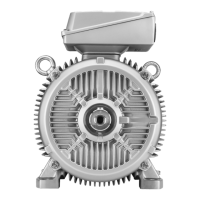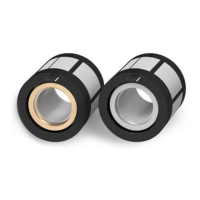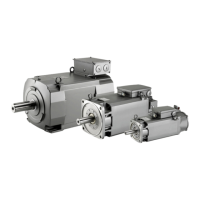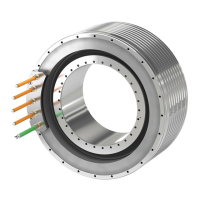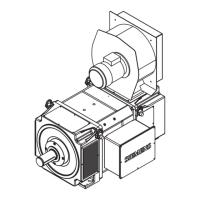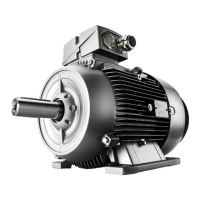7.3 Checking the insulation resistance
Notes for checking the insulation resistance
Installation inspection, preventive maintenance and troubleshooting are examples of required
checking of the insulation resistance on a machine/system with direct drives or directly on the
motors.
WARNING
Risk of electric shock
If you check the insulation resistance using high voltage, this can damage the motor insulation.
There is a risk of death or serious injury if energized parts are touched.
• Only use test equipment that is in compliance with DIN EN 61557-1, DIN EN 61557-2 and
DINEN61010-1 or the corresponding IEC standards.
• Check the insulation resistance on the individual motors only according to the following
procedure.
• If a DC voltage > 1000V or an AC voltage is necessary to test the machine/system, then
coordinate this test with your local sales partner.
• Carefully observe the operating instructions of the test device.
Procedure
1. Interconnect all winding and temperature sensor connections. Check against the PE
connection or the motor enclosure with a maximum voltage of 1000 VDC for maximally 60 s.
2. Connect all temperature sensor connections to the PE connection and interconnect all
winding connections. Check the winding against the PE connection or the motor enclosure
with a maximum voltage of 1000VDC for maximally 60s.
❒
Each insulation resistance must be at least 10MΩ. A lower insulation resistance indicates
that the motor insulation is damaged.
WARNING
Risk of death due to electric shock!
During and immediately after the measurement, in some instances, the terminals are at
hazardous voltage levels, which can result in death if touched.
• Never touch the terminals during or immediately after measurement.
Commissioning
7.3Checking the insulation resistance
Naturally-Cooled 1FN3 Linear Motors
Operating Instructions, 06/2023, A5E52220465B AB 103
